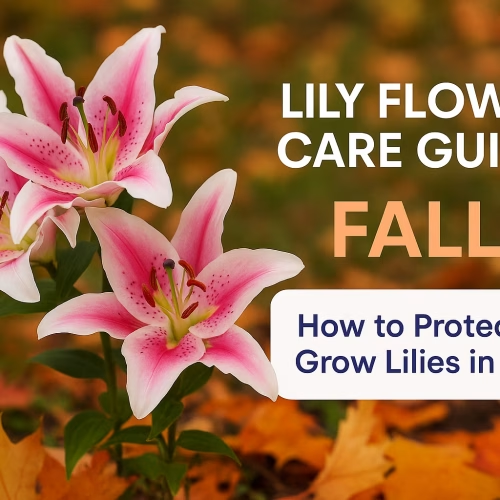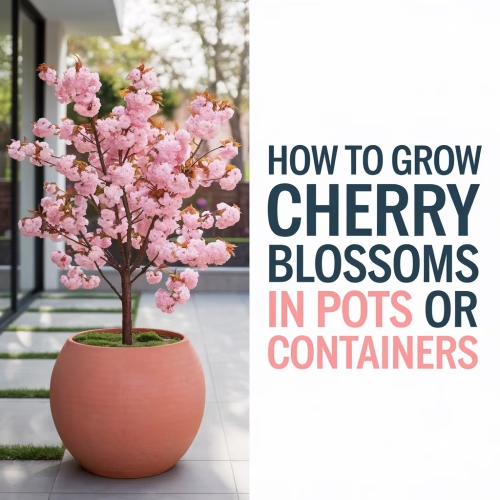You love the idea of a lush garden, but let’s be real—who has time to water, weed, and worry about plants every single day? Between work deadlines, social commitments, and trying to squeeze in some self-care, gardening can feel like just another chore on your never-ending to-do list.
Here’s the good news: you don’t need hours of free time to create a beautiful, thriving garden. With the right strategies and low-maintenance hacks, even the busiest people can enjoy fresh herbs, colorful blooms, and homegrown veggies without the overwhelm.
I’ve been there—staring at wilted plants and feeling guilty about neglecting my garden. But after years of trial and error, I’ve discovered that smart gardening isn’t about having more time; it’s about working smarter, not harder. These practical gardening tips will help you cultivate a gorgeous outdoor space that practically takes care of itself.
Table of Contents
Why Low-Maintenance Gardening Works for Busy Lives
Let me tell you something that changed my perspective completely: gardening shouldn’t add stress to your life—it should relieve it. When you embrace low-maintenance gardening, you’re not being lazy; you’re being strategic.
The traditional approach to gardening requires constant attention, but modern gardening tips focus on creating self-sustaining ecosystems. By selecting the right plants, using smart tools, and implementing time-saving techniques, you can enjoy all the benefits of gardening (fresh air, homegrown food, and that satisfying connection to nature) without the daily grind.
Think of it as part of your self-care routine—a way to nurture yourself and your environment without adding to your mental load. Just like developing healthy habits, the key is starting with sustainable practices that fit your lifestyle.
—
1. Choose the Right Plants (The Foundation of Easy Gardening)
This is hands-down the most important gardening tip I can share: plant selection makes or breaks a low-maintenance garden.
Native Plants Are Your Best Friend
Native plants have evolved to thrive in your local climate, which means they:
- Require less water once established
- Resist local pests and diseases naturally
- Need minimal fertilization
- Survive temperature fluctuations better
My top native plant picks for beginners:
- Coneflowers (Echinacea): Drought-tolerant, attracts pollinators, blooms for months
- Black-eyed Susans: Nearly indestructible, bright yellow flowers
- Lavender: Fragrant, deer-resistant, thrives on neglect
- Sedum: Succulent groundcover that spreads beautifully
- Ornamental grasses: Add texture with zero fuss
Drought-Resistant Varieties Save Time and Water
Even if you don’t live in an arid climate, drought-resistant plants are incredibly forgiving. They bounce back from missed waterings and don’t punish you for a busy week.
| Plant Type | Examples | Why They’re Perfect for Busy People |
|————|———-|————————————-|
| Succulents | Jade, Aloe, Hens & Chicks | Store water in leaves, need watering every 2-3 weeks |
| Mediterranean Herbs | Rosemary, Thyme, Oregano | Thrive in poor soil, love heat, edible bonus! |
| Perennial Flowers | Yarrow, Salvia, Russian Sage | Return yearly, minimal care, beautiful blooms |
| Groundcovers | Creeping Thyme, Ajuga | Choke out weeds, spread naturally |
—
2. Automate Your Watering (Set It and Forget It)
Watering is typically the most time-consuming gardening task, but technology has made it ridiculously easy to automate.
Drip Irrigation Systems
I installed a simple drip irrigation system in my vegetable garden three years ago, and it was honestly life-changing. These systems deliver water directly to plant roots, reducing waste and ensuring consistent moisture.
Benefits of drip irrigation:
- Reduces water usage by 30-50%
- Prevents fungal diseases (water doesn’t touch leaves)
- Can be connected to timers for complete automation
- Works perfectly with raised beds and containers
You can find affordable drip irrigation kits online that take less than an hour to install—no plumbing expertise required!
Self-Watering Containers
For container gardens, self-watering planters are absolute game-changers. They have built-in reservoirs that wick water up to the roots as needed, meaning you only water every 1-2 weeks instead of daily.
Pro tip: Add water-absorbing crystals (polymer crystals) to your soil mix. They hold water and release it slowly, extending time between waterings even further.
Smart Timers
Connect a simple battery-operated timer to your outdoor faucet, and you’ll never forget to water again. Set it to water early morning (best time for plant absorption), and you’re done. Some smart timers even connect to weather apps and skip watering when rain is forecasted!
—
3. Mulch Like Your Garden Depends on It (Because It Does)
If I could only give you one gardening tip, it would be this: mulch everything, generously.
Mulch is the ultimate low-maintenance hack that:
- Suppresses weeds by blocking sunlight
- Retains soil moisture (reducing watering needs)
- Regulates soil temperature
- Breaks down to improve soil quality
- Makes your garden look polished and intentional
Best Mulch Options
Organic mulches (my preference):
- Wood chips or bark: Long-lasting, attractive
- Shredded leaves: Free if you have trees!
- Straw: Perfect for vegetable gardens
- Compost: Feeds plants while mulching
Inorganic mulches:
- River rock or pebbles: Permanent, no replenishing needed
- Landscape fabric: Blocks weeds effectively
How to mulch properly:
- Clear existing weeds first
- Apply 2-4 inches of mulch around plants
- Keep mulch 2-3 inches away from plant stems (prevents rot)
- Replenish organic mulch annually
I spend maybe 30 minutes twice a year refreshing mulch, and it saves me hours of weeding and watering. That’s a trade I’ll take every time!
—
4. Embrace Container Gardening
Container gardening is perfect for busy people because it offers maximum control with minimum effort.
Why Containers Are Low-Maintenance Superstars
- No weeding: Seriously, this alone is worth it
- Portable: Move plants to optimal sun/shade as needed
- Better pest control: Easier to monitor and treat
- Flexible: Start small and expand as time allows
- Perfect for renters: Take your garden with you
Container Gardening Tips for Success
Choose the right size: Bigger pots = less frequent watering. Go for containers at least 12-16 inches in diameter.
Use quality potting mix: Never use garden soil in containers—it compacts and drains poorly. Quality potting mix is fluffy, drains well, and contains nutrients.
Group containers together: Creates a microclimate that retains moisture and makes watering more efficient.
Best plants for containers:
- 🍅 Cherry tomatoes (get a self-supporting variety)
- 🌿 Herbs (basil, mint, parsley, cilantro)
- 🥬 Salad greens (lettuce, arugula, spinach)
- 🌸 Petunias, geraniums, marigolds
- 🫑 Peppers (compact varieties)
—
5. Focus on Perennials Over Annuals
Annual flowers are gorgeous, but they require replanting every single year. Perennials are the ultimate time-saver because they return year after year, often bigger and better than before.
Low-Maintenance Perennial Favorites
For sun:
- Daylilies (nearly indestructible)
- Hostas (shade-tolerant, huge variety)
- Peonies (live for decades)
- Coreopsis (blooms all summer)
For shade:
- Ferns (elegant, zero-fuss)
- Astilbe (feathery blooms)
- Hellebores (early spring flowers)
- Bleeding heart (romantic, deer-resistant)
Bonus: Many perennials can be divided every few years, giving you free plants to expand your garden or share with friends!
—
6. Invest in the Right Tools (Quality Over Quantity)
You don’t need a shed full of tools, but having a few quality essentials makes gardening so much easier. Just like creating healthy morning routines, having the right tools sets you up for success.
Essential Low-Maintenance Garden Tools
| Tool | Why You Need It | What to Look For |
|——|—————–|——————-|
| Soaker Hose | Waters slowly at ground level | 50-foot length, quality rubber |
| Ergonomic Hand Trowel | Planting and weeding | Comfortable grip, stainless steel |
| Bypass Pruners | Clean cuts on stems and branches | Sharp blades, spring-loaded |
| Garden Kneeler | Saves your knees and back | Folds to standing handle |
| Long-Handled Weeder | Remove weeds without bending | Sturdy construction, comfortable grip |
Storage tip: Keep tools in a bucket filled with sand mixed with mineral oil. This prevents rust and keeps them ready to use.
—
7. Grow What You’ll Actually Use
One of the biggest mistakes I made early on was growing plants just because they seemed impressive. A giant zucchini plant sounds cool until you’re drowning in zucchini and can’t give them away fast enough!
Strategic Plant Selection
Ask yourself:
- Do I actually eat this vegetable or herb?
- Will I use these flowers (cutting garden, pollinators, aesthetics)?
- Does this plant fit my available space?
- Is the harvest time realistic for my schedule?
High-value, low-effort edibles:
- 🌿 Herbs: Grow what you buy most often (for me: basil, cilantro, parsley)
- 🍅 Cherry tomatoes: More forgiving than large varieties
- 🥬 Lettuce mix: Cut-and-come-again varieties
- 🫑 Peppers: Set fruit and forget them
- 🥒 Cucumbers: Vertical growing saves space
Growing your own herbs and greens can actually support your wellness journey, providing fresh ingredients for gut-healing smoothies and healthy meals.
—
8. Let Nature Do the Work (Companion Planting & Beneficial Insects)
The smartest gardening tip? Work with nature, not against it.
Companion Planting Basics
Certain plants help each other thrive when grown together:
- Tomatoes + Basil: Basil repels tomato pests
- Carrots + Onions: Onions deter carrot flies
- Marigolds + Everything: Natural pest deterrent
- Nasturtiums: Sacrificial plants that attract aphids away from veggies
Attract Beneficial Insects
Instead of constantly battling pests, invite their natural predators:
- Ladybugs eat aphids
- Lacewings consume mealybugs and whiteflies
- Bees pollinate (obviously!)
- Ground beetles eat slug eggs
How to attract them:
- Plant flowers with different bloom times
- Include native plants
- Provide water sources (shallow dishes with stones)
- Avoid pesticides (even “organic” ones can harm beneficials)
—
9. Use Raised Beds for Ultimate Control
If you have the space and budget for an initial investment, raised beds are worth every penny for low-maintenance gardening.
Why Raised Beds Rock
- Better drainage: No waterlogged roots
- Warmer soil: Earlier planting, extended season
- Less bending: Easier on your back
- Controlled soil: Fill with perfect growing medium
- Fewer weeds: Start with weed-free soil
- Defined spaces: Looks intentional, easy to maintain
You can build simple raised beds with untreated cedar or purchase metal or composite kits. Even 6-8 inches of height makes a significant difference.
Pro tip: Line the bottom with hardware cloth to keep out burrowing pests like gophers and moles.
—
10. Batch Your Garden Tasks
Just like meal prepping saves time during the week, batching garden tasks makes maintenance feel manageable.
Create a Simple Garden Schedule
Spring (30 minutes weekly):
- Week 1: Plant cool-season crops
- Week 2: Add mulch to beds
- Week 3: Check and adjust irrigation
- Week 4: Fertilize containers
Summer (20 minutes weekly):
- Check watering systems
- Harvest ripe produce
- Deadhead flowers (optional, for extended blooms)
- Quick weed patrol
Fall (30 minutes weekly):
- Plant spring bulbs
- Clean up spent annuals
- Mulch perennials
- Drain and store hoses
Winter (minimal):
- Dream and plan next season
- Order seeds
- Rest!
This approach transforms gardening from a daily obligation into a weekly ritual that you might actually look forward to—kind of like your journaling practice.
—
11. Start Small and Expand Gradually
Here’s something I wish someone had told me: you don’t need to create your dream garden all at once.
The Power of Starting Small
Begin with:
- One 4×4 raised bed
- Three containers on your patio
- A small herb garden by the kitchen door
- A single flower bed
Why this works:
- Less overwhelming to maintain
- Lower initial cost
- You learn what works in YOUR specific conditions
- Success builds confidence and motivation
- Easy to expand when ready
I started with three pots of herbs on my balcony. Five years later, I have a thriving garden with vegetables, flowers, and a small fruit tree. But I never would have stuck with it if I’d tried to do everything at once.
12. Use Technology to Your Advantage
We live in 2025—let’s use modern tools to make gardening easier!
Helpful Garden Apps and Tech
Plant identification apps:
- Picture This
- PlantNet
- iNaturalist
Garden planning apps:
- Gardenize (track what you plant and when)
- Garden Plan Pro (design layouts)
- Smart Plant Home (care reminders)
Weather monitoring:
- Connect smart irrigation to weather forecasts
- Get frost alerts for tender plants
- Track rainfall to adjust watering
Online communities:
- Join local gardening Facebook groups
- Follow hashtags like #ContainerGardening #LazyGardener
- Ask questions on Reddit’s r/gardening
Technology can remind you when to fertilize, warn you of upcoming frost, and connect you with experienced gardeners who can troubleshoot problems—all time-savers!
—
Conclusion: Your Low-Maintenance Garden Awaits
Creating a beautiful, productive garden doesn’t require hours of daily labor or a green thumb. With these practical gardening tips, even the busiest people can enjoy fresh herbs, vibrant flowers, and the mental health benefits of connecting with nature
Gardening should enhance your life, not complicate it. By implementing these low-maintenance hacks, you’re creating a sustainable practice that will bring you joy for years to come—without the overwhelm.
Just like building healthy habits or working toward your vision board goals, the secret is starting small, being consistent, and celebrating progress over perfection.
Now get out there and grow something beautiful—you’ve got this!




